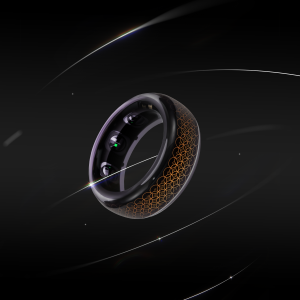The quest for peak performance and optimal well-being in 2025 has a new frontier, and the battle for your wrist (or finger!) is heating up. If you're a US buyer navigating the crowded landscape of advanced health trackers, the question on your mind is likely: Oura vs Whoop? Both Oura and Whoop stand at the pinnacle of wearable technology, offering sophisticated insights into your body's signals. But with distinct approaches and features, selecting the right one for your unique lifestyle and fitness aspirations can feel overwhelming.
This guide is your definitive roadmap, cutting through the noise to provide a clear, unbiased comparison tailored for the US market in 2025. We'll dissect their core functionalities, delve into sleep and recovery analysis, evaluate workout tracking precision, examine subscription models, and ultimately help you determine which of these powerful devices offers the superior value for your personal health journey.
Understanding the Core Differences: Oura vs Whoop 2025
The wearable technology landscape is increasingly crowded with devices promising to unlock insights into our health and performance. For those focused on optimizing sleep, recovery, and training, the choice often boils down to two leading contenders: the Oura Ring and the Whoop Strap. While both aim to provide actionable data, their core philosophies and areas of expertise differ significantly, making the Oura vs Whoop decision a crucial one for personalized wellness.
Oura Ring: The Sleep & Recovery Champion
The Oura Ring has carved out a reputation as the premier device for deep sleep analysis and daily readiness assessment. Its discreet, ring form factor prioritizes comfort for 24/7 wear, especially during sleep. Oura excels in providing a highly detailed breakdown of sleep stages, including REM, deep, and light sleep, alongside insights into sleep efficiency and disturbances. This granular sleep data directly feeds into its Readiness Score, a key metric that helps users understand their body's capacity for physical and mental exertion on any given day. The Oura vs Whoop comparison often highlights Oura's strength in guiding users on when to push and when to rest, based on their restorative sleep.
Whoop Strap: The Performance & Strain Expert
In contrast, the Whoop Strap is engineered with an intense focus on athletic performance and training load. Its continuous monitoring capabilities are geared towards quantifying Strain, a measure of the physiological stress placed on the body during physical activity. Whoop's algorithms are adept at tracking cardiovascular load, offering a comprehensive view of exertion and its impact on Recovery. For athletes and fitness enthusiasts, the Oura vs Whoop debate leans towards Whoop for its detailed workout analysis and its emphasis on balancing training intensity with adequate rest for optimal adaptation.
Key Terminology Explained: Readiness, Recovery, Strain, and More
Understanding the core metrics is vital when comparing Oura vs Whoop. Readiness, as championed by Oura, is a composite score reflecting your body's preparedness for the day, heavily influenced by sleep quality and recent activity. Recovery, a central tenet of Whoop, quantifies your body's physiological restoration, often presented as a percentage. Strain on Whoop represents the cumulative physiological stress from activity.
Both platforms utilize advanced sensors to track crucial physiological signals like Heart Rate Variability (HRV) and Respiratory Rate, which are foundational to their respective scoring systems. For instance, a higher HRV is generally indicative of better recovery, a concept understood by both Oura and Whoop, though they may present and interpret it within their unique frameworks.
Ultimately, the choice between Oura and Whoop hinges on your primary wellness goals. If you prioritize understanding and optimizing your sleep and daily energy levels, Oura is likely the superior choice. Conversely, if your focus is on meticulously tracking workout intensity, managing training load, and maximizing athletic performance, Whoop offers a more specialized solution.
Deep Dive: Sleep Tracking and Readiness Scores in 2025
As wearable technology continues to evolve, the ability to accurately track and interpret our sleep and recovery has become a cornerstone of personal health optimization. In 2025, both Oura and Whoop stand at the forefront of this field, offering sophisticated insights into our body's nightly restoration. Understanding their distinct methodologies is crucial for anyone looking to leverage this data for better well-being. This deep dive explores how Oura and Whoop measure sleep quality and recovery, and critically examines their accuracy in the competitive landscape of Oura vs Whoop.
How Oura Measures Your Sleep Quality
The Oura Ring is renowned for its comprehensive sleep analysis, providing users with a detailed breakdown of their nightly rest. Oura meticulously tracks sleep duration, latency, and efficiency, but its strength lies in its granular sleep stage segmentation. Users can expect a detailed report on their deep, REM, and light sleep cycles, offering insights into the restorative and cognitive functions of each stage. The platform also factors in disturbances and time spent awake, contributing to an overall Sleep Score that reflects the quality and effectiveness of your rest. This detailed sleep staging is a key differentiator when comparing Oura vs Whoop.
Whoop's Approach to Recovery Insights
Whoop, on the other hand, presents its data through a holistic lens, with its signature Recovery Score being a central metric. This score is not solely dictated by sleep duration, but rather by a confluence of factors, including the quality and quantity of sleep, Heart Rate Variability (HRV), and resting heart rate. Whoop emphasizes understanding how your body is prepared to handle strain, making its recovery insights particularly valuable for athletes and those engaged in demanding physical or mental activities. While Whoop also tracks sleep stages, its primary focus is on the impact of that sleep on your overall physiological readiness, offering a different perspective in the Oura vs Whoop debate.
Comparing Accuracy: Which Tracker Offers Better Sleep Data?
When it comes to the accuracy of sleep tracking, both Oura and Whoop generally receive high marks from users and independent reviews. However, there are nuances. Oura may provide more granular sleep stage details, offering a deeper dive into the specific architecture of your sleep. This can be beneficial for individuals trying to understand specific sleep patterns or issues. Whoop's strength lies in its integrated approach to recovery, where sleep data is a critical component but not the sole determinant of its readiness score. Ultimately, the choice between Oura vs Whoop often comes down to individual priorities: detailed sleep stage analysis or a broader, actionable recovery metric. Both platforms are continuously refining their algorithms, ensuring they remain leaders in personal health monitoring.
Workout Performance: Strain, Activity, and Training in 2025
In the evolving landscape of fitness tracking, understanding how devices like Oura and Whoop can shape our workout performance in 2025 is crucial. Both offer distinct approaches to monitoring our bodies, influencing everything from daily activity to the nuances of intense training sessions. Deciding between Oura vs Whoop often comes down to individual training goals and preferences.
Leveraging Whoop's Strain Coach for Optimal Workouts
Whoop’s signature metric, Strain, is designed to quantify the physiological stress placed on your body during physical exertion. This metric is ideal for managing workout intensity and preventing overtraining. By providing a daily Strain score, Whoop helps users understand when to push harder and when to prioritize recovery. For instance, a high Strain score might indicate that a lighter recovery session or rest day is more beneficial than another high-intensity workout, thus safeguarding against potential injuries and burnout. This proactive approach to training load management is a key differentiator when considering Oura vs Whoop for serious athletes.
Oura's Activity Goals and Performance Insights
Oura, on the other hand, excels at tracking daily activity goals and provides valuable insights into your body's energy expenditure. While it doesn't have a direct “Strain” metric in the same vein as Whoop, Oura's focus on readiness and sleep quality indirectly informs workout performance. Its activity tracking encourages consistent movement throughout the day, contributing to overall fitness. The Oura Ring’s insights into sleep and recovery are fundamental for athletes looking to optimize their performance by ensuring their bodies are adequately prepared for training. When comparing Oura vs Whoop, Oura's strength lies in its holistic view of daily readiness.
Which is Better for Strength Training vs. Endurance Athletes?
The choice between Oura vs Whoop can be particularly pronounced for different types of athletes. Whoop is often preferred by strength athletes due to its precise Strain metric, which allows for meticulous management of training volume and intensity, crucial for muscle growth and recovery. Conversely, Oura can be a powerful ally for endurance training planning. Its emphasis on recovery and daily readiness helps endurance athletes gauge their capacity for long, demanding sessions, ensuring they are well-rested and primed for peak performance over extended periods. Ultimately, both devices offer compelling features, and the optimal choice in 2025 will depend on whether your focus is on the granular management of training stress or the broader optimization of daily readiness for sustained effort.
The 2025 Subscription Model and Value Proposition
When comparing Oura vs Whoop, understanding their respective subscription models and value propositions is crucial for making an informed decision. The long-term cost and the features unlocked by each payment structure significantly influence which device offers more bang for your buck in the US.
Oura's Pricing: One-Time Purchase vs. Optional Subscription
Oura Ring operates on a model that requires an initial hardware purchase. This upfront investment grants you ownership of the ring itself. However, to access the full suite of advanced features, personalized insights, and historical data analysis, an optional subscription is necessary. This tiered approach allows users to experience basic tracking without a recurring fee, but the true power of the Oura ecosystem is unlocked with the subscription.
Whoop's Membership: Understanding the Monthly/Annual Commitment
In contrast, Whoop employs a mandatory monthly or annual subscription model. There is no upfront hardware cost; instead, you pay a recurring fee for access to the Whoop band and its comprehensive data platform. This commitment ensures continuous access to all Whoop features, including advanced recovery, strain, and sleep metrics, as well as firmware updates.
Long-Term Value: Which Offers More Bang for Your Buck in the US?
The long-term value proposition of Oura vs Whoop hinges on your individual needs and budget. If you prefer outright ownership and are content with basic metrics, Oura's one-time purchase might be appealing. However, for users seeking a deeply integrated and continuously evolving health tracking experience, Whoop's all-inclusive subscription model, despite its recurring cost, often provides a more comprehensive and potentially higher long-term value, especially considering the constant innovation and feature development within the Whoop platform. Ultimately, consider your budget and commitment level when evaluating the long-term cost and the depth of insights each platform provides.
Choosing the Right Tracker for You in the US Market 2025
Navigating the crowded landscape of wearable fitness trackers in the US market for 2025 can be a challenge. Two prominent contenders, Oura and Whoop, cater to distinct user needs, making the choice between Oura vs Whoop a crucial one for optimizing your health and fitness journey. Understanding their core strengths will help you identify the device that best aligns with your personal goals.
Who Should Choose Oura? (The Sleep Optimizer)
If your priority is deep sleep analysis and daily readiness, Oura is likely your best bet. The Oura Ring excels at providing incredibly detailed insights into your sleep stages, duration, and quality. It translates this data into a daily “Readiness Score,” which helps you understand how recovered your body is and whether it's optimal for strenuous activity or if you should focus on rest and recovery. This makes Oura a powerful tool for individuals looking to understand the profound impact of sleep on their overall well-being and performance. For those who believe that recovery starts with a good night's sleep, Oura offers unparalleled depth.
Who Should Choose Whoop? (The Performance Tracker)
Conversely, if you focus on workout intensity, recovery, and training optimization, Whoop is the stronger contender. Whoop's primary focus is on quantifying your strain and recovery throughout the day, with a particular emphasis on athletic performance. It provides detailed metrics on cardiovascular strain, recovery levels, and sleep performance, all geared towards helping you train smarter, not just harder. The Whoop Strap is designed for those who want to push their physical limits and meticulously track their body's response to training, ensuring they are adequately recovered for their next challenge.
Integrating with Your Favorite US Fitness Apps
Both Oura and Whoop offer robust integrations with popular US platforms like Strava and Apple Health, allowing you to consolidate your fitness data and gain a more holistic view of your progress.
Practical Implications:
- Data Consolidation: Seamlessly connect your Oura or Whoop data with other fitness apps you use. This means your sleep, recovery, and workout metrics can be viewed alongside your activity logs, nutrition tracking, or other health data for a comprehensive overview.
- Enhanced Analysis: By integrating with platforms like Strava, you can correlate your training load and recovery scores with specific workout performance, providing deeper insights into how your body is adapting.
Actionable Tips:
1. Prioritize Apps You Already Use: Before choosing, check if your preferred US fitness apps (e.g., MyFitnessPal, Peloton, Google Fit) have direct integrations with Oura or Whoop. This ensures a smoother experience and avoids manual data entry.
2. Explore Data Sharing Options: Understand what specific data points each tracker shares with integrated apps. This will help you leverage the most relevant information for your personal analysis and goal tracking.
When considering Oura vs Whoop, reflect on whether your primary objective is sleep optimization and daily readiness (Oura) or performance-driven training and recovery analytics (Whoop). By aligning your choice with your core health and fitness aspirations, you can ensure your chosen tracker becomes an invaluable partner in your 2025 wellness journey.
FAQ (Frequently Asked Questions)
Q1: Which device is better for general wellness tracking for the average US user?
A1: For general wellness, the Oura Ring is often recommended for its focus on sleep quality and daily readiness, which are fundamental for overall well-being. Its discreet design also makes it more comfortable for continuous wear for those not intensely focused on athletic training.
Q2: Is Whoop worth the subscription cost for a casual athlete in the US?
A2: If you are a casual athlete who occasionally engages in moderate exercise, the Whoop subscription might be more than you need. However, if you are looking to understand your body's response to exercise more deeply, prevent overtraining, and optimize recovery for even moderate activity, the insights can be very valuable. Consider your training frequency and intensity.
Q3: Can I use Oura and Whoop together for more comprehensive data?
A3: While technically possible to wear both or use both apps, it's generally redundant and can lead to conflicting interpretations of your data. Both devices offer sophisticated, integrated systems. It's best to choose one that aligns with your primary goals for a clearer, more actionable data experience.
Q4: How does the battery life compare between Oura and Whoop in 2025?
A4: Oura typically offers around 5-7 days of battery life on a single charge, while Whoop generally requires charging every 4-6 days. Both are designed for continuous wear with minimal interruption for charging.
Q5: Which device offers better insights into cardiovascular health beyond just workouts?
A5: Both devices track key cardiovascular metrics like resting heart rate and Heart Rate Variability (HRV). Oura integrates these into its Readiness Score, while Whoop uses them extensively for its Recovery and Strain metrics. For a deeper dive into cardiovascular health specifically, both provide valuable data, but Whoop's continuous focus on strain and recovery might offer more detailed workout-related cardiovascular insights.
Conclusion
As we stand on the cusp of 2025, the landscape of wearable fitness technology presents two formidable contenders: Oura and Whoop. Both have cemented their positions as leaders, offering sophisticated, data-driven insights to elevate your well-being. However, the crucial distinction lies in their core strengths. For those prioritizing optimizing sleep quality and understanding their daily readiness, Oura stands out as the champion, providing unparalleled clarity on rest and recovery. Conversely, if your focus is on maximizing athletic performance through rigorous workout strain analysis and precise recovery management, Whoop emerges as the indispensable tool.
Ultimately, the choice between Oura and Whoop in 2025 hinges on a deep reflection of your personal health and fitness aspirations. Ask yourself: are you seeking to unlock your best sleep and conquer your day with peak energy, or are you driven to push your athletic boundaries and master your recovery? Beyond your primary goals, a thorough review of your budget for both initial hardware investment and ongoing subscription fees is essential. Once you've aligned these factors, your path to a more informed and empowered fitness journey becomes remarkably clear.
Ready to take control of your health and performance in 2025? Explore the detailed features of both Oura and Whoop and make the choice that best aligns with your personal wellness journey. Visit their official websites today to learn more and make your purchase. Don't let another year pass without optimizing your health – invest in your well-being now.









